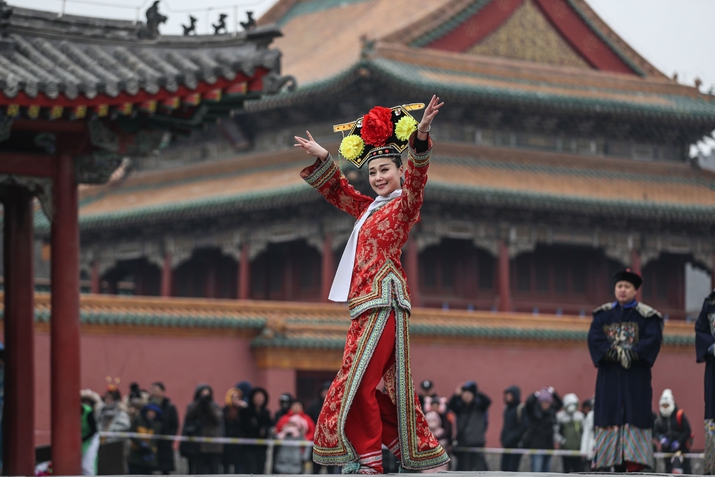| Voice |
| Birthplace of the Qing Dynasty | |
|
|
 A dancer performs inside the Shenyang Palace Museum during an event in celebration of the Spring Festival on February 6, 2019 (XINHUA)
After having studied Chinese for almost three years in Jordan, I chose northeast China as my destination in an attempt to improve my standard Chinese and learn the northeastern dialect. I arrived in China for the first time in 2017, with Shenyang, capital of Liaoning Province, embarking on my journey. It is home to one of China's most significant imperial artifacts, the Shenyang Imperial Palace, today's Shenyang Palace Museum, which is usually compared to the Forbidden City in Beijing. Shenyang's Imperial Palace may be smaller in size than the one in Beijing, but it is equally worthy of attention. The palace, also known as the Mukden Palace, was the birthplace of the Qing Dynasty (1644-1911). Shenyang was the first capital of the Qing Dynasty before it expanded its power to the south and moved the capital to Beijing. Shortly after the end of the Qing Dynasty, the palace was transformed into a museum to give spectators a firsthand glimpse of this historic masterpiece, attracting tourists and locals alike. One summer morning, I decided to go and see this ancient palace with my own eyes. As soon as I arrived at the palace in Shenhe District, right in the heart of the city, I noticed just how beautifully the blue skies contrasted with the palace's tall bright red walls. Inside the palace, I could not help but notice the diverse blend of Han, Man and Mongolian decorative features reflective of Shenyang's history and strategic location. The elaborate and well-preserved architecture transported me back in time. From the detailed artwork to the stone statues, to the golden throne, it was as if time had stood still since its original creation in 1625. I felt like I was walking onto a movie set. The museum consists of three sections: east, middle, and west. Dazheng Hall is one of the palace's main attractions. And it was, without a doubt, my favorite part. I can still vividly remember the pair of iconic golden dragon figures guarding the entrance to the hall. Dragons were believed to be a symbol of royal power and strength; thus, they are deeply ingrained in Chinese mythology and culture. The feeling of royalty and the mystic aura the figures brought to their surroundings were unforgettable. I walked through the imperial garden enjoying the colorful scenery of Chinese roses. This could have easily been a landscape taken from a painting. Palettes of gold and red were ubiquitous throughout the palace due to their cultural significance. Gold represented wealth and prosperity, while red symbolized good fortune and joy. The Shenyang Palace Museum showcases an abundance of ancient relics, including imperial Chinese currencies, swords, clothing and furniture that allow people to accurately witness the imperial lifestyle that was adopted hundreds of years ago. It is no surprise that this site made it onto the UNESCO World Heritage List back in 2004. As my visit was drawing to an end, I looked at the variety of souvenirs on sale near the exit. There were accurate replicas of historic artifacts, which would make a great gift or a reminder of the tour. I was particularly interested in the imperial coins that were used during the Qing Dynasty. I bought a book titled Qing Dynasty 12 Emperors, which presented the coins in circulation during each emperor's reign. The imperial residence stands at the city's modern industrial center. Here, people experience past, present and future. The author is a Jordanian studying at Tsinghua University in Beijing Copyedited by Elsbeth van Paridon Comments to dingying@bjreview.com |
|
||||||||||||||||||||||||||||
|